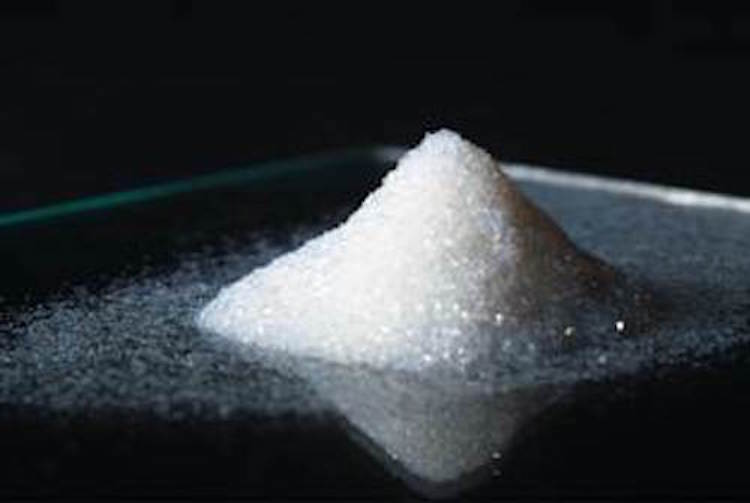‘Programmable’ microparticles for packaging
June 14, 2017

For medical devices and pharmaceuticals, joining the fight against counterfeiting and diversion could involve something as simple—and small—as a dust-sized particle.
TruTag Technologies has developed TruTag microtags, or “TruTags,” dust-sized particles that can be incorporated into packaging or labels and even into the devices and drugs themselves. Made of high-purity silica (silicon dioxide – SiO2), these microparticles can carry a wealth of digital information that could be used for product identification, authentication, traceability, and more.
The company has recently partnered with IRIS Corp. Bhd (IRIS), a provider of identification technologies, to potentially codevelop a portfolio of smartcard and secure label products.
“The solution works by incorporating programmable microparticles into existing labels and packaging,” Barry McDonogh, Senior Vice President of Business Development of TruTag Technologies, tells PMP News. “The embedded microparticles are covert, which means that the elegance of the existing label or packaging artwork is not impacted.” Process reengineering isn’t required, either, which significantly reduces implementation costs, he says.
The company produces the microtags with specific spectral signatures selected by its production team and assigns each signature to a particular customer. “Each tag is optically encoded with a spectral signature that can be associated with a product, line, country, plant, trading partner, or batch,” McDonogh continues. “The microparticles are introduced into the label using preexisting laminates and varnishes. This means no business process reengineering is required, which significantly reduces implementation costs.”
The tags can be embedded into products, too. “The TruTags can be applied to surfaces via a coating or varnish, or they can be incorporated into certain materials like plastics and other polymers,” says McDonogh. For instance, they can be injection molded or thermoformed into containers or parts. “TruTags are made of silicon dioxide, which has a melting point well over 1000°C, so they can be easily mixed into plastic feed stock and incorporated into the molten injected material. Then, they can be recovered forensically by vaporizing the plastic material in a high-heat oven, leaving only the tags behind for recovery and authentication.” Silica is also resistant to cold, sun exposure, and most moisture conditions, unless the fluid is extremely acidic or extremely basic, which enables the tag to last the entire product lifetime, he says.
Such qualities make the tags suitable for medical devices, drug-delivery devices, and more. “Because TruTags are GRAS silica, they can be applied to medical devices, even in areas that come in contact with the human body,” says McDonogh.
TruTags can even play a role beyond product identification. “We are working with strategic partners who are using our microparticles as a vehicle for targeted and long acting drug delivery, whereby the nano-pores of the microparticles are filled with active pharmaceutical ingredients and then injected into the body, and payload is subsequently released in a controlled fashion over a number of months.” They are even edible, he says.
TruTag Technologies sends precise quantities of TruTags to customers for incorporation into or onto their products, or they can incorporate the tags into rolls of secure labels for use by the customer. “The customer then can choose what product information it would like to associate with the assigned signatures or what printed information is on the secure label,” he says. “The customer can use many spectral codes, depending on how modular they want to slice their supply chain and product information.”
The labels can be authenticated in the field using a TruTag reader, McDonogh says. “The reader works by collecting a particle’s spectral code, which is then cross referenced against an active code library,” he explains. “Authenticity is confirmed in 3-5 seconds and associated product or document intelligence is revealed – manufacturing information, distribution channel, sales territory, etc. All the authentication data is stored centrally on the platform and is available for reporting purposing."
TruTag Technologies’s partnership with IRIS positions the two companies to investigate codevelopment of a portfolio of smartcard and secure label products to customers in both the government and private sectors around the world.
“The combined strengths and product portfolio of both companies will enable us to target practically every aspect of product authentication, including enhancing the safety and traceability of food and medicine, which is an issue of global importance,” stated Dr. Hank C.K. Wuh, Founder and Chairman of TruTag Technologies, in a news release.
For more details, click here.
About the Author(s)
You May Also Like




